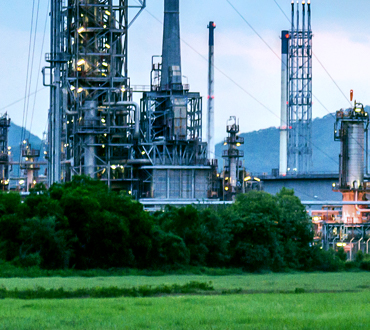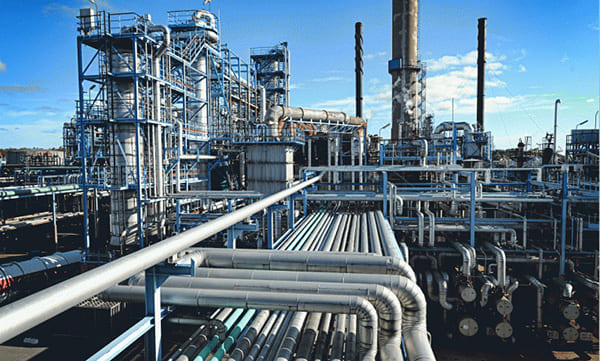Innovative, cutting-edge, actionable insights to improve your olefin facilities’ competitiveness & performance.
The competitive struggle in global olefins is intensiying. Waves of massive, state-of-the-art plants are commissioning. Top performers continue to push the boundaries of high performance, and sustainability pressures are increasing. In this historically difficult environment, how are your olefin facilities measuring up?
Solomon’s Worldwide Olefin Plant Performance Analysis (Olefin Study) provides participants with a comprehensive assessment of competitiveness for each of their plants, including economic gaps for all key performance areas. The upcoming study features many new innovations, providing deeper insights for sustainability, energy, yield, and reliability and maintenance performance.
The Return on Investment (ROI) for Olefin Study participants averages 250 times the study cost at 10% closure of identified gaps.
- How reliable are my facilities compared to top-reliability performers?
- How effective is my maintenance program in driving reliability outcomes?
- How does my energy efficiency compare to peer plants and new plants?
- How large is my carbon footprint relative to industry peers?
- How large is my yield gap to competition? How do my feedstocks compare?
- How does my workforce size and productivity compare to industry peers?
- How do my operating expenses compare to others in my region?
- How competitive are my total production costs and net cash margins?
To stay competitive, operators must understand what drives good operating performance, uncover key areas of underperformance in their operations, and identify quick and direct solutions to achieve or maintain their status as a top performer in the olefins industry.
The two figures below are examples of insight you can gain by participating in the study compared to top performers. Figure 1 shows the relationship between relative maintenance cost and reliability as measured by the percentage of capacity achieved. Figure 2 shows the distribution of all plants’ Carbon Emissions IndexTM (CEITM) and your plant performance. CEITM is an index of the actual carbon dioxide equivalent CO2e emissions relative to standard CO2e emissions. Compared to top performers, do you know where you are, and do you have a plan on how to get there?

Figure 1. Maintenance Cost vs Reliability

Figure 2. Carbon Footprint
As the industry leader in performance benchmarking, Solomon has been delivering mission-critical insight to olefins industry clients for more than 30 years. It is essential to have an objective and detailed understanding of your competitive strengths and weaknesses in order to formulate prioritized, effective improvement programs that span both tactical “Quick-Hits” and strategic investments.
The study analyzes operating data spanning multiple categories, including asset footprint, capacity and flexibility, feedstock and product mix, conversion performance, energy consumption and costs, operating expenses, maintenance cost, turnaround performance, production losses, staffing, sustainability parameters, and capital expenditures against peers to identify gaps. Participants will receive individual performance rankings for their facilities on a global, regional, and peer group basis using Solomon’s propritary metrics and indicators. Study results can be used to improve target-setting, to prioritize spending, and to develop action plans to close gaps compared to industry peers.
Why Participate?
- Identify actionable performance gaps
- Assess detailed competitive position
- Establish performance improvement targets
- Formulate improvement plans and programs
- Prioritize improvement activities
- Provide justifications for capital investment and staffing plans
- Measure improvement activity progress
- Demonstrate performance to joint-venture partners and financial institutions
Study Deliverables
Study participants receive the following:
- Performance rankings on a global, regional, and peer group basis for all performance areas
- Metrics and indicators for all peer groups for all performance areas including historical trends
- An economic gap analysis versus global high-performing peers
- An on-site presentation and discussion of study results
Frequently Asked Questions (FAQ)
The Olefin Study is a comparative performance analysis that uses proprietary data to provide participants with a comprehensive assessment of competitiveness for each of their plants, including economic gaps for all key performance areas against industry peers. This benchmarking analysis uncovers key areas of underperformance, enabling root-cause analysis to identify appropriate quick and direct solutions to optimize/reduce costs and maximize performance.
Yes, if a plant only closes 10% of the identified gaps from study results, the payout is over 200 times the study fees. Most plants see even greater performance improvement.
Yes, typically 70–80% of the industry capacity participate in the Olefin Study each year. In our 2021 study, 145 plants participated in the study for a total of 73% of the industry capacity worldwide.
Solomon’s Olefin Study can include, on an optional basis, Carbon Insights and greenhouse gases (GHG) Gap Report. The offering is a plant-specific analysis of carbon emission performance, quantifying the impact of more than 10 differentiating factors that drive comparative carbon performance for olefin plants.
The study analyzes production cost, net cash margin, return on investment, capacity utilization, energy expense, maintenance cost, personnel cost, other operating expense, operational availability, maintenance cost efficiency, annualized turnaround downtime, annualized turnaround cost, reliability & maintenance effectiveness, energy intensity, carbon footprint, environmental emissions, and other performance metrics against peers to identify gaps.
Olefin Study results can be leveraged in many ways to improve performance. You can use results to assess competitive strengths and weaknesses, identify actionable performance gaps, establish performance improvement targets, formulate improvement plans and programs, prioritize improvement activities, justify capital investments and staffing plans, measure progress of improvement activities, and demonstrate performance to joint venture partners.
Learn How You Can Participate
Our robust performance benchmarking delivers actionable insights for continuous improvement. The competitive bar is being raised as never before. Are your olefin plants keeping up? Join others that leverage actionable insight in the Olefin Study to solve their most critical issues and improve performance.
Data Quality, Benchmarking Methodology
A Foundation for Effective Comparative Performance Analysis and Decision Support
We prioritize the integrity and confidentiality of participant-submitted data and rigorously review that data before benchmarking begins. Then, we employ our normalization process and benchmarking methodology to provide valuable and trusted peer group comparisons that deliver meaningful KPIs. Finally, our staff of senior consultants apply their deep industry experience to develop practical insight and recommendations to enable your success.

.jpg)
.jpg)
.jpg)
.jpg)
.jpg)
.jpg)
.jpg)
.jpg)
.jpg)
.jpg)
.jpg)
.jpg)
.jpg)
.jpg)
.jpg)
.jpg)

.jpg)








-updated.jpg)
.jpg)

.jpg)
.jpg)
.jpg)
.jpg)

